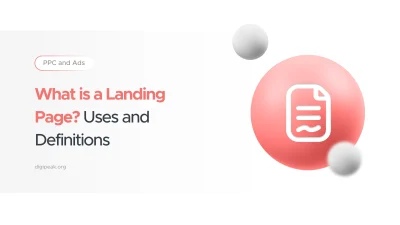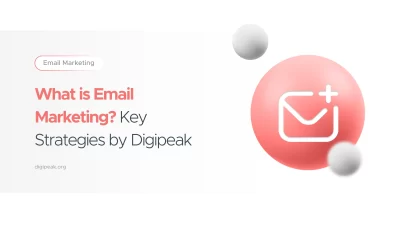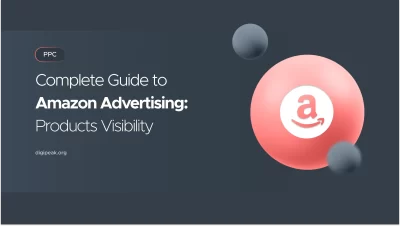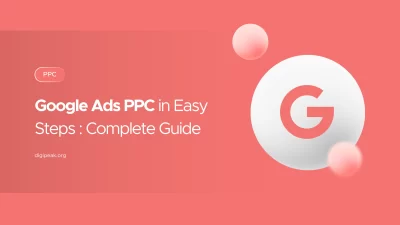
What is a Landing Page? Uses and Definitions
Landing Pages are the web pages that visitors are directed to after clicking on advertisements. …
26/04/2023 -
8 dk okuma
Stay up to date with Peakers
In today’s digital age, businesses and advertisers are always looking for effective ways to reach their target audiences and drive conversions. One such method that has gained increasing popularity in recent years is retargeting.
Retargeting strategies are digital advertising strategies that involve displaying targeted ads to users who have already interacted with a business’s website, landing page, or products. By utilizing data such as browsing history and user behavior, retargeting allows businesses to keep their brand top-of-mind for potential customers and drive them further down the sales funnel.
In this blog post, we will explore the ins and outs of retargeting, including how it works, its various types, and its goals. We will also delve into specific examples of email and Facebook retargeting, so you can see how these strategies can be implemented in real-world scenarios.
Retargeting is a type of online advertising that targets people who have already shown interest in a brand, product, or service by visiting their website or engaging with their content. This marketing technique helps to keep a brand or product at the forefront of a customer’s mind, increasing the likelihood that they will make a purchase or take a desired action.
Ad retargeting, also known as retargeting marketing or retargeting advertising, is a strategy that utilizes pixel retargeting to display remarketing ads to a specific audience. By placing a retargeting pixel on a website, Google retargeting ads can be displayed to visitors who have previously interacted with the site, providing targeted advertising.
Online advertising companies and online advertising agencies frequently use this type of internet advertising because it enables them to connect with potential customers who have expressed interest in their business.
Google remarketing is one popular way of remarketing Google ads to reach this audience, as it offers paid online advertising opportunities to businesses of all sizes. Ultimately, this approach can help businesses increase conversions and improve their online advertising business.
Retargeting campaigns work by placing a small piece of code, also known as a “pixel,” on a website. This pixel tracks visitors to the website and collects data on their behavior, such as pages visited or items viewed. This data is then used to display targeted ads to those visitors as they browse the internet. There are two main types of website retargeting: pixel-based and list-based.
Pixel-based retargeting involves placing a cookie on a visitor’s browser when they visit a website. This cookie then allows the website owner to display targeted ads to that visitor as they browse the internet.
List-based retargeting involves creating a list of visitors to a website and using that list to display targeted ads to those visitors as they browse the internet. This type of retargeting is particularly useful for businesses that have a large email list or customer database.
Retargeting and remarketing are often used interchangeably, but there is a subtle difference between the two.
Retargeting is a form of online ads that targets people who have already shown interest in a brand, product, or service by visiting their website or engaging with their content.
Remarketing, on the other hand, is a broader term that encompasses all types of marketing efforts that target people who have already had some form of interaction with a brand, including email marketing and social media advertising.

There are several goals that businesses can have when running retargeting ads. These include:
Retargeting ads can be used to raise awareness of a brand or product among people who have already shown some level of interest. By displaying targeted ads to these individuals, businesses can keep their brand top of mind and increase the likelihood that they will make a purchase in the future.
Take Advantage of Automation with Artificial Intelligence!
How can you use your time more efficiently? Artificial intelligence saves you time by automating repetitive tasks. Learn how you can leverage AI to accelerate your business processes.
Retargeting ads can also be used to drive conversions by targeting people who have already shown an interest in a particular product or service. By displaying targeted ads to these individuals, businesses can encourage them to take action and make a purchase.
Is Your Ad Budget Flowing but Nothing in Return?
Get Free Ad Analysis with Digipeak!
Which campaigns are a waste of money? Are you spending unnecessary money? Where are the potential opportunities? We examine your ad performance in detail. Fill out the form now for a free analysis!
Retargeting ads can also be used to guide people through the buyer’s journey, from awareness to consideration to decision. By displaying targeted ads at each stage of the journey, businesses can help move potential customers closer to making a purchase.
Retargeting ads can also be used to increase customer lifetime value by encouraging repeat purchases from existing customers. By displaying targeted ads for complementary products or services, businesses can encourage existing customers to make additional purchases.
Retargeting ads can also be used to reduce cart abandonment by targeting people who have added items to their cart but have not completed the checkout process. By displaying targeted ads to these individuals, businesses can encourage them to complete their purchase.
Retargeting ads can also be used to introduce new products to people who have already shown an interest in a particular brand or product. By displaying targeted ads for new products, businesses can encourage existing customers to make a purchase and attract new customers who may be interested in the new product.

Here are some of the most common methods of retargeting:
Email retargeting involves sending targeted emails to potential customers who have shown interest in your product or service but have not yet made a purchase. Email retargeting can be highly effective as it allows you to reach out to customers who have already engaged with your brand, increasing the chances of converting them into paying customers.
With email retargeting, you can personalize your messages based on the actions of your customers, such as browsing specific products on your website or abandoning their cart before completing their purchase.
Google Ads retargeting, also known as remarketing or Google remarketing, is a type of advertising campaign that targets people who have already interacted with your website or brand in some way.
When someone visits your website, Google places a cookie in their browser which allows you to track Google ads audiences behavior on your site. Then, when that person leaves your site and visits other websites on the Google Display Network, you can show them targeted ads based on the pages they visited on your site.
To set up a retargeting campaign in Google Ads, you’ll need to create a remarketing list based on the behavior of visitors to your website. You can then use this list to create targeted ads that will be shown to people who meet certain criteria, such as having visited a specific page on your site or having abandoned a shopping cart.
Facebook retargeting is another method of retargeting that allows businesses to reach out to potential Facebook target audience customers who have already shown an interest in their products or services on Facebook. By using a pixel to track Facebook audience visitors to your website, you can create custom audiences and show them personalized ads on Facebook.
Facebook ad targeting is effective because it allows you to reach people where they spend a lot of their time online. To get started, set up a Facebook pixel and create your custom audience, then create retargeting ads and set your budget and targeting options.
Retargeting ads Facebook is a great way to show ads to people who have already shown an interest in your brand or product. Remarketing Facebook allows you to re-engage with people who have interacted with your business before, by showing them tailored ads based on their previous actions.
In conclusion, retargeting is a powerful digital marketing strategy that can help businesses increase their conversion rates, improve customer lifetime value, and drive revenue growth. By showing ads to people who have already expressed interest in your brand or products, you can create highly targeted campaigns that are more likely to result in sales.
There are several different types of retargeting campaigns available, including pixel-based retargeting, list-based retargeting, email retargeting, and Facebook retargeting. Each of these methods has its own unique strengths and can be used to achieve different marketing goals.
However, it’s important to remember that retargeting is just one piece of the overall marketing puzzle. To create a truly effective marketing strategy, businesses need to leverage a variety of tactics, including search engine optimization, social media management, and content marketing.
At Digipeak, we specialize in helping businesses develop comprehensive digital marketing strategies that leverage a wide range of tactics to drive growth and achieve their marketing goals with our dynamic team. If you’re interested in learning more about how we can help you improve your marketing ROI with retargeting and other services in digital marketing, please don’t hesitate to contact us today.
Get an Offer


Join Us So You Don't
Miss Out on Digital Marketing News!
Join the Digipeak Newsletter.
Related Posts

Landing Pages are the web pages that visitors are directed to after clicking on advertisements. …

Let's learn how businesses use email not only to communicate with customers but also to …

As someone who's navigated the complex world of Amazon advertising, I understand how overwhelming it …

Digipeak is your ultimate partner in navigating the world of digital advertising. With a mission …